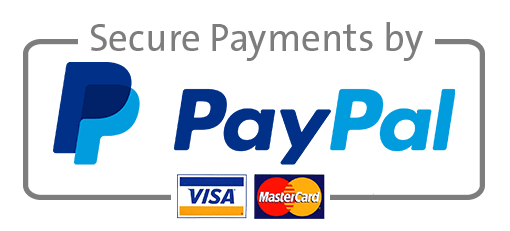Please replies to these two work with 200 words each one with a reflection of their response
FIRST-Screening, a fundamental component of nursing practice, entails administering measures or tests to differentiate individuals who may have a particular condition from those who probably do not. This pivotal healthcare tool offers a multitude of advantages while also presenting some notable disadvantages, requiring nurses to navigate the complexities of its implementation carefully.
One of the most significant advantages of screening in nursing is its potential for early disease detection. This advantage is crucial for conditions like cancer, where earlier identification can significantly improve treatment outcomes (Crosby et al., 2022). By regularly administering screening tests, nurses can identify health issues in their nascent stages, enabling prompt intervention and increasing the likelihood of successful treatment.
Additionally, screening equips nurses to provide preventative care effectively. Healthcare professionals can use screening to find people more likely to develop a specific condition and then take preventative measures to lower that risk. This can entail suggesting dietary adjustments, physical activity, and providing immunizations to lower the chance of contracting an illness. Preventive measures can lower the incidence of various diseases, which can significantly positively impact public health overall.
The potential long-term cost-effectiveness of screening is another benefit. While the initial costs of screening programs might seem high, compared to managing advanced-stage illnesses, early disease detection and treatment frequently necessitate less intensive interventions and resources (van der Aalst et al., 2021). Therefore, early detection and intervention can lead to significant cost savings for patients and healthcare systems, consistent with providing healthcare at a reasonable cost.
Nonetheless, there are some disadvantages to screening in nursing practice. The possibility of false-positive and false-negative results is one major worry. Erroneous results from screening tests can have serious repercussions because they are not perfect (Wikramaratn et al., 2020). False positive results can cause patients to experience needless worry, more diagnostic testing, and higher medical expenses. On the other hand, false negative results may give rise to a false sense of security, postponing required medical intervention and possibly allowing the illness to worsen unchecked.
Another notable disadvantage of screening is the phenomenon of overdiagnosis. Some screening tests may identify conditions that would never have caused harm or required treatment in an individual’s lifetime. This situation can lead to overtreatment, expose patients to unnecessary risks, and escalate healthcare costs. Overdiagnosis underscores the importance of carefully weighing the benefits and harms of screening.
Ethical considerations also loom large in the world of screening. Deciding who should be screened, at what age, and how frequently can be ethically challenging. It involves a delicate balance between potential benefits and harms. In some instances, individuals may feel coerced into screening, infringing on their autonomy and raising ethical dilemmas regarding informed consent.
In conclusion, screening in nursing practice is a powerful tool with a multifaceted impact. Nurses must meticulously evaluate the advantages and disadvantages when implementing screening programs and communicate effectively with patients to make informed decisions. While early disease detection and prevention benefits are undeniable, nurses must also remain cognizant of potential drawbacks to ensure the highest patient care and ethical practice standards.
SECOND-In modern healthcare, health promotion and disease prevention are highly emphasized instead of treatment. The premise is that with prevention, healthcare professionals can detect an individual’s disease risk or identify any healthcare concerns early enough to initiate effective treatment protocols. Screening tests are part of the prevention strategies, and they come with some advantages and disadvantages:
The most common advantage of screening tests is that they can be used to identify disease at its early stages. Screening tests are usually done on patients who do not feel sick. Such patients may have hidden illnesses developing. However, if the illness is identified, it may be treated early to avoid further complications. For example, cancer may be identified at an early stage before it spreads out to vital organs. Treatment at this stage may have a higher likelihood of better patient outcomes.
Also, screening tests can be used to detect a disease risk, such as the risk of lung cancer in people who smoke (Krist et al., 2021). If found at risk, the patient may be asked to initiate effective lifestyle changes that protect them from developing the disease. In another example, a blood sample may be used to screen for a patient’s cholesterol levels. If the patient is found with abnormal cholesterol levels, they may be rendered at high risk of heart disease (Mortensen et al., 2023). The healthcare professional may recommend a reduction of cholesterol in the diet to prevent the disease. This suggests that screening tests are quite helpful in detecting disease risks.
However, screening tests may come with certain disadvantages. For example, specific screening tools may expose patients to harmful health effects. Such tools include X-rays, which may emit high radiation levels and increase the risk of radiation poisoning (Jaglan et al., 2019).
Another con is that screening tests may not be entirely reliable. This is because there are several cases of false positives or false negatives, which may lead to unnecessary treatments or unmet healthcare needs and additional hefty medical costs. Also, screening tests may expose the healthcare system to poor resource management or allocation, especially if the tests are publicly administered but with less health impact on the participants. The premise of this point is that healthcare systems have limited resources and must make decisions based on opportunity costs. If such decisions are not effective, the health system may be deemed inefficient. Therefore, public health decision-makers need to compare the advantages and disadvantages plus costs before making such decisions.

